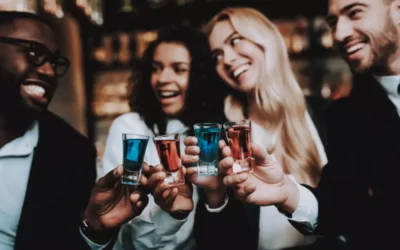Content
Odds ratio and confidence interval was calculated to determine risk conferred by a predisposing allele/genotype/haplotype. Logistic regression analysis was carried out to correlate various clinical parameters with genotypes, and to study pair-wise interactions between SNPs. Levels of CB1 receptors in mice as measured by autoradiography, shown using a rainbow scale with blue representing the lowest levels and red the highest. Mice with alcohol and dopamine no dopamine receptors drinking water (B) had higher levels of CB1 receptors than normal mice drinking water (A). Drinking alcohol seemed to negate this “up-regulation” in the dopamine-receptor-deficient mice (D), which had about half the level of CB1 receptors compared to the dopamine-receptor-deficient water drinkers (B). Dopamine is a critical part of the brain that helps control movement, pleasure, attention, mood, and motivation.

The study participants received a very small amount of their preferred beer — 15 milliliters — over a 15-minute time period, enabling them to taste the beer without resulting in any detectable blood-alcohol level or intoxicating effect. Peter Piraino, LMSW, LCDC, LISAC, serves as Executive Clinical Director for Renewal Lodge and CEO of Burning Tree Programs. Responsible for executing the vision of Burning Tree’s philosophy of excellence, Peter’s primary goal is to help as many clients as possible gain access to the treatment they need. A clinician by training, Peter incorporates sound, ethical business practices to help inform the organization of its duties to the greater community. By placing the needs of his staff and company ahead of his own, Peter leads with a team approach that continues to inspire the mission of Burning Tree Programs. A proud father, Peter and his wife count six dogs amongst their family members.
Though they differ in some ways, both weed and alcohol have been linked to dopamine-related feelings of euphoria.
Even with alcohol’s effect on dopamine production, you don’t have to continue drinking. Rehab programs will help break the cycle through detox and therapy — either one-on-one or group sessions. Some addictive substances affect dopamine directly, whereas alcohol and other drugs have an indirect effect. Alcohol is a small molecule, so it interacts with many neurotransmitters in the brain. Large molecules, like opiates or amphetamines, only stimulate a specific neurotransmitter. Motivation — a process by which stimuli (e.g., the smell of food) come to trigger responses to obtain a reward (e.g., a palatable food) or to avoid a punishment (e.g., a painful electrical shock) — generally serves to maintain bodily functioning and ensure survival.
One of the greatest gifts of recovery is that I have the opportunity to give back and help others discover their self-worth, dignity, and the skills to fully live lives that they find truly meaningful. This is the inspiration for developing the skills of Mindfulness in Recovery® (MIR) to meet the needs of new generations struggling with alcohol and other substance use disorders. MIR is a set of evidence-based skills designed to help people fully integrate their tools of recovery in ways that are personalized, practical, and in alignment with their deepest values. While the damage you can inflict on your brain with heavy alcohol use is disturbing, it is entirely possible to experience recovery from addiction and begin to heal from the inside out. Once the body is free of alcohol, the brain can begin to heal itself but long-term recovery from alcoholism requires continued support and lifestyle modifications. This can involve counseling, support groups, and healthy behaviors like regular exercise and a well-balanced diet.
Ways Quitting Drinking Affects Your Brain
Unlike other drugs, which prevent the reuptake of dopamine, alcohol doesn’t do that. In clinical trials in Sweden, alcohol-dependent patients who received an experimental drug called OSU6162, which lowers dopamine levels in rats, experienced significantly reduced alcohol cravings. These changes also help to rewire your brain away from thinking of alcohol as a reward, reducing the risk of a relapse to heavy drinking the longer you stay away from alcohol. Of course for long-time heavy drinkers, this usually takes abstinence or very low levels of drinking, including a difficult withdrawal period. Dopamine’s effects on neuronal function depend on the specific dopamine-receptor subtype that is activated on the postsynaptic cell. For example, different subpopulations of neurons in the striatum carry different dopamine receptors on their surfaces (Le Moine et al. 1990, 1991; Gerfen 1992).
As a result, people with an alcohol addiction may consume even more alcohol in an unconscious effort to boost their dopamine levels and get that spark back. When we drink, the brain’s so-called reward circuits are flooded with dopamine. The detailed necropsy procedures used to harvest tissues [28] and obtain ex vivo slices [8] have been previously described. A block containing the caudate and putamen was microdissected from the left hemisphere and sectioned with a VT1200S (Leica, Buffalo Grove, IL) in a sucrose cutting solution aerated with 95% O2/5% CO2 (see Supplementary Materials for composition). A ceramic blade (Camden Instruments Limited, Lafayette, IN) was used for sectioning 250 µm slices that were equilibrated at 33 °C for 1 h in equilibration ACSF before being moved to room temperature for an additional hour before beginning experiments. On top of its essential role as a chemical in the brain, dopamine also acts as a hormone.
Subjects
The study did not follow the participants to determine whether the exaggerated dopamine response actually predicted development of AUD at a higher rate, so more studies will be needed to determine if this abnormality really does increase risk of the disorder. An example of an excitatory neurotransmitter is glutamate, which would normally increase brain activity and energy levels. Alcohol suppresses the release of glutamate, resulting in a slowdown along your brain’s highways. The brain is filled with different types of nerve cells that release different types of neurotransmitters.
- “We observed an up-regulation of CB1 in D2-deficient mice that was reversed by chronic ethanol intake,” Thanos said.
- Similarly, we did not see any significant changes in mRNA levels of the nAChR subunits.
- Therapy sessions will teach you coping techniques to deal with the triggers that fuel drinking.
- When their choice was the best it could have been, we see dopamine levels falling when we expected it to increase like we observed in patients without alcohol use disorder,” Kishida said.
- This research has enhanced understanding of a wide array of human medical conditions including cancer, drug addiction, Alzheimer’s and Parkinson’s diseases, and normal aging and has led to the development of several promising treatment strategies.
Subsequently, access to alcohol was extended to 24 h/day in the second month and for the remainder of the experiment. The bottles were weighed prior to and after each session to calculate alcohol intake (g/kg) and alcohol preference (% of total fluid consumed). The selection of LD and HD was performed as previously described (Spoelder et al. 2015). Briefly, after 2 months of IAA, the rats were ranked based on the animals’ average alcohol intake per week and were assigned ranking scores. The weekly ranking scores were summed to calculate a total ranking score per rat. The rats within the lower and upper 25 % of the total ranking score range were designated as LD and HD, respectively.
It is one of the most ancient neurotransmitters as it is found in lizard brains, too. Too much dopamine can lead to euphoria, aggression, and intense sexual feelings. Basically, dopamine is one of the brain’s ways to communicate some of our most primal urges and needs, and it “rewards” someone for eating, drinking water, exercising, and having sex as a way to reinforce those behaviors—to continue doing the things that help sustain life. Alcohol use overloads the brain with dopamine, while also reducing the brain’s dopamine receptors in the process.
To do this, they first started with rats that were bred to conditionally inhibit the th gene; this gene provides instructions for making tyrosine hydroxylase, which is an enzyme that is required for the synthesis of dopamine. Half of these rats then received an injection of a virus, which expresses hM4Di, into the substantia nigra (i.e., the beginning of the nigrostriatal dopamine pathway). HM4Di can then be activated by injecting the rats with C21 (an hM4Di agonist), which then selectively and temporarily inhibits the th gene and blocks dopamine synthesis in the substantia nigra.
After dopamine D1 receptor stimulation using SKF 82958, alcohol intake and preference was reduced throughout the session. In contrast, the selective dopamine D2 receptor agonist sumanirole mainly reduced alcohol intake during the first phase of the alcohol consumption session, and concurrently reduced preference for alcohol during the first 2 h of the session. Importantly, upon the initial decrement in alcohol intake, sumanirole increased alcohol intake during the remainder of the session. The initial decrease in alcohol intake, followed by a subsequent rise in alcohol intake after treatment with sumanirole, suggests a rebound effect after the initial suppression of alcohol intake. Importantly, however, a similar increment in alcohol intake did not occur upon SKF treatment, indicating that an initial decrease in alcohol intake is not necessarily followed by a rebound increase in alcohol intake.
Which activity releases the most dopamine?
Sex, shopping, smelling cookies baking in the oven — all these things can trigger dopamine release, or a "dopamine rush."
The study was conducted in accordance with worldwide good-clinical-practice (GCP) standards and confirmed to acceptable ethical standards as outlined by local requirements and the Declaration of Helsinki (World Medical Association, 1989). After six months, the scientists compared the levels of a different kind https://ecosoberhouse.com/article/how-marriage-changes-after-sobriety/ of brain receptor known as cannabinoid type 1 (CB1) in various parts of the brain in all four groups. CB1 receptors are located near dopamine receptors and are also known to play a role in alcohol consumption and addiction. Many findings indicate that the two types of receptors may influence one another.
The goal of this episode is to help people make informed decisions about their alcohol consumption that are in keeping with their mental and physical health goals. For the determination of dopamine transient uptake kinetics, the modeling module in DEMON was used as previously described [30]. To examine D2/3 dopamine autoreceptor function, the D2/3 dopamine receptor agonist, quinpirole (30 nM), was bath applied for 30 min and was followed by application of the D2-like dopamine receptor antagonist sulpiride (2 µM) for 15 min. To examine differences between tonic and phasic release, we applied stimuli at varying frequencies before and after the application of the β2 subunit-containing nAChR antagonist, dihydro-β-erythroidine hydrobromide (DHβE; 1 µM).





